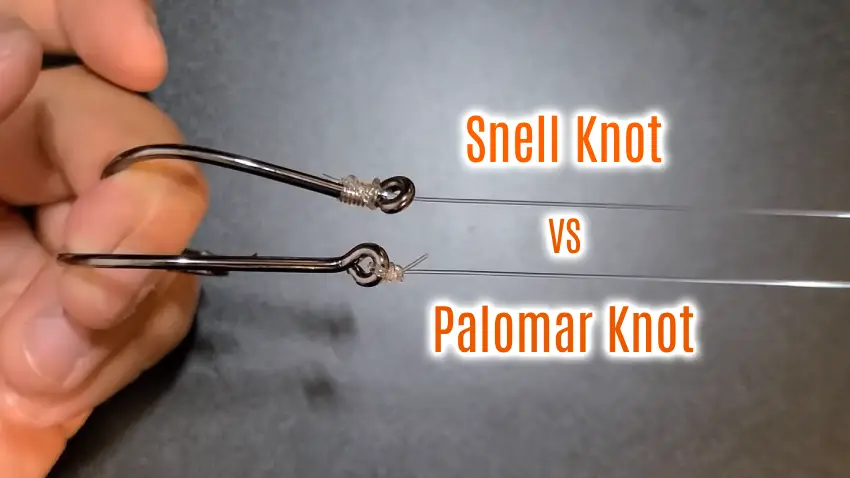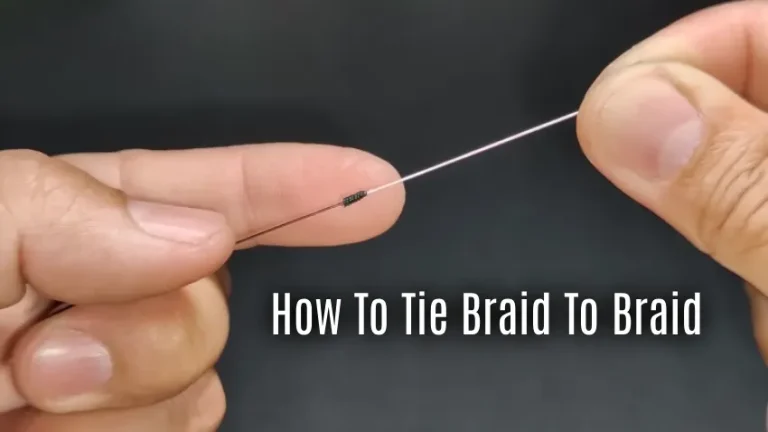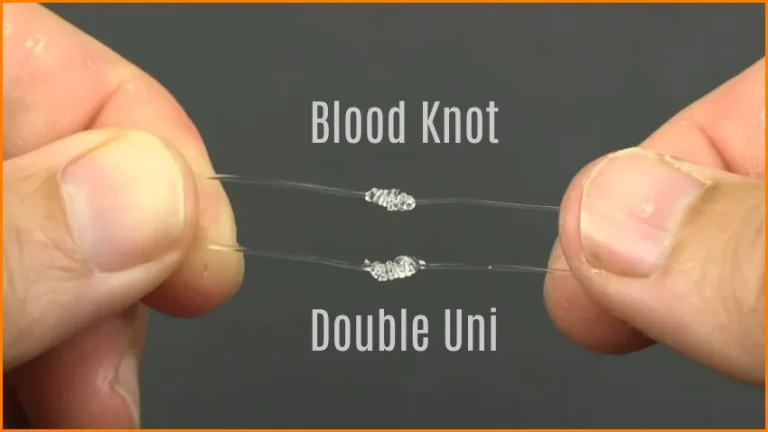Snell Knot vs Palomar Knot for Fishing Hooks: 6 Significant Differences
When securing fishing hooks, anglers often find themselves in a debate about whether to use the Snell knot or the Palomar knot. Both knots have their merits, but they differ in several key ways.
The Snell Knot involves wrapping the line around the hook’s shank, creating a strong connection ideal for live bait. Alternatively, the Palomar Knot is known for its simplicity and stronger breaking point, making it a popular choice for large fishing situations.
Throughout this article, we’ll look at six major differences between the Snell and Palomar knots so you can choose wisely. We will also discuss how to tie these knots and discover the strongest for securing your hook.
Key Differences Between Snell Knot and Palomar Knot for Fishing Hooks
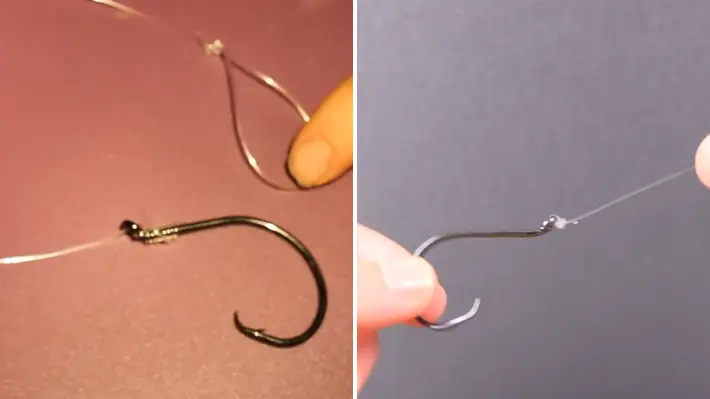
Regarding securing fishing hooks, the knot choice between Snell and Palomar can significantly affect your angling success. The following are six major differences:
- Knot structure and ease of tying
- Hook presentation
- Strength and durability
- Line thickness
- Knot preferences and situational use
- Consideration of fishing conditions
1. Knot Structure and Ease of Tying
The Snell knot involves creating a loop through the hook’s eye and twisting the line around the shank before securing it. This knot may seem more intricate, but it becomes fairly easy to tie with practice.
Meanwhile, the Palomar knot is renowned for its simplicity. It’s tied by forming a loop, passing it through the eye of the hook, and securing it with a simple twist and pull. Anglers appreciate the Palomar knot for its ease of tying, especially in various fishing situations.
2. Hook Presentation
The Snell knot ensures a straight-line presentation, which can be advantageous in certain fishing scenarios. Keeping the line and hook aligned increases the chances of a successful hookset. This is particularly useful when using bait that needs to be presented straight and naturally.
Conversely, the Palomar knot creates a slight offset between the line and the hook. Some anglers believe this offset provides a better presentation for live bait, especially when using baitfish like a bunker. The slight angle the Palomar knot creates can make the bait appear more enticing and realistic to the fish.
3. Strength and Durability
When considering strength, both knots have their advantages. The Snell knot boasts a breaking point at 81% of the fishing line’s strength of 10 lbs, making it a reliable choice for withstanding the force of a fighting fish.
Alternatively, the Palomar knot outperforms the Snell knot in a strength test, holding up to over 95% of the fishing line’s breaking point. This superior strength makes the Palomar knot favorable for anglers targeting larger fish.
Regarding durability, both knots are known for maintaining their integrity under pressure. However, the Palomar knot’s superior strength enhances durability, making it a more resilient choice overall.
4. Line Thickness
When referring to line thickness, the Snell knot is generally preferred for lighter lines with a lower pound test. This is because the Snell knot is easier to tie with lighter lines.
On the other hand, anglers tend to favor the Palomar knot for lines over the 60# test, as snelling with thicker lines can be quite difficult. The Palomar knot provides a strong and secure connection for thicker lines, making it a popular choice among anglers who prefer heavier tackle.
5. Knot Preferences and Situational Use
The Snell knot is known for its ability to keep the hook straight, which leads to better hooksets and reduced line stress. This makes it a popular choice for anglers who prioritize accuracy and precision.
In contrast, the Palomar knot is favored for its strength and simplicity. It’s easy to tie, making it ideal for situations where you need to quickly secure a knot while on a boat or in rough conditions.
6. Consideration of Fishing Conditions
When deciding which knot to use, consider the conditions you’ll face on the water. Factors such as water clarity, current strength, and structure or cover can all play a role in determining the most effective knot for the situation.
For example, if you’re fishing in clear water with a strong current, the Snell knot may be the better option due to its ability to hold the hook in place securely. But the Palomar knot’s simplicity and strength make it a reliable choice for fishing around structure or cover.
What is the strongest knot for a fly fishing hook between Snell and Palomar Knot?
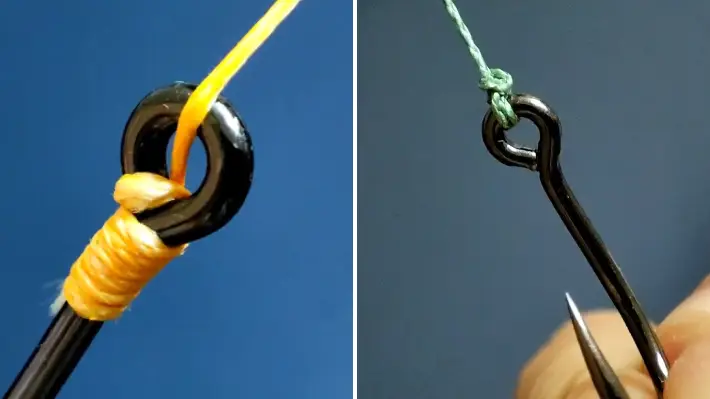
The strongest knot for your fly-fishing hook is the Palomar Knot. This knot has been proven to be extremely powerful in many fly-fishing situations.
Palomar Knot is known for its strength because it minimizes twists and kinks, making it incredibly tough to break. Whether you’re using a braided line or monofilament, the Palomar Knot can be relied upon to hold your hook in place securely.
What are the disadvantages of the Snell Knot?
Although the Snell Knot is a popular choice for many anglers, it has disadvantages.
One of the main drawbacks of the Snell Knot is its rigidity. This can make it less suitable for precision fishing. The stiffness of the Snell Knot can make it more difficult for the bait or lure to move naturally in the water, potentially reducing its effectiveness in attracting fish.
Also, the Snell Knot can be more time-consuming to tie than other knots, especially for beginners. It requires threading the line through the hook eye and creating multiple wraps around the shank, which can be tricky to master.
Choose the Perfect Knot for Stronger and Secure Fishing Hooks
The Snell and Palomar knots have distinct advantages and are reliable for securing fishing hooks. Your choice should be based on your specific fishing needs and preferences.
But, when choosing between the Snell Knot and the Palomar Knot for fishing hooks, the Palomar Knot is the stronger option. Its ability to securely fasten the hook and maintain its strength under pressure makes it the preferred choice among many anglers.
Experiment with both knots to determine which suits your style and the conditions you encounter on your fishing adventures. Remember, a well-tied knot can be the difference between landing that trophy catch and losing it.

